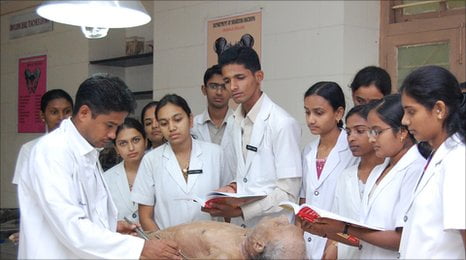Rank Holders Opting For Non-Surgical Courses: Health Ministry

New Delhi: Hospitals across the country could face a shortage of surgeons because more and more MBBS students are opting for non-surgical courses, the latest Health Ministry data has revealed.
1. During the 2018-19 academic year, 189 of the 2029 seats in super speciality courses had no takers. out of these 189 vacant seats, 168 belonged to four major disciplines such as cardiothoracic and vascular surgery (CTVS), paediatric surgery, plastic surgery and neurosurgery.
2. The figures were prominently highlighted by Hindustan Times in a front-page story on Sunday. In the 2017-18 academic session, 290 of the 571 seats had no takers belonging to these four surgical disciplines.
3. The could be multiple reasons behind this trend. Advancement in technology such as stents has reduced the need for open-heart surgery. Inadequate infrastructure in government hospitals for surgical disciplines and the threat of being dragged into medico-legal cases. This is higher for surgeons.
4. The rise in incidences of non-communicable diseases has also triggered a demand for specialists, the paper said quoting senior doctors.
5. A decade ago, CTVS was chosen by doctors with high ranks in the qualifying exams, but over the past few years, those opting for it are the lowest rankers, principle of Vardhaman Mahavir Medical College Dr N N Mathur was quoted by the paper as saying.
6. Non-surgical courses which are most sought after these days are cardiology, endocrinology, urology, nephrology and medical oncology.
7. However, the phenomenon among high ranking students to opt for non-surgical disciplines is not confined to India alone. According to doctors, the trend is equally going strong in the West.
8. Alarmingly, according to the newspaper, the Health Ministry is now mooting to dissolve the vacant seats in medical colleges as demands are declining every year.
9. As it is, the shortage of doctors across all disciplines in India is a concern no government has been able to address so far. India has less than one doctor for every 1,000 citizens, which is less than the World Health Organisation (WHO) standard that prescribes a doctor-population ratio of 1:1,000.
10. In July 2017, Union Minister of State for health Anupriya Patel had told Parliament that as per information provided by the Medical Council of India (MCI), there were a total 10,22,859 allopathic doctors registered with the MCI or with state medical councils as of 31 March, 2017. India’s population, at present, stands at over 130 crores.

Comments are closed.